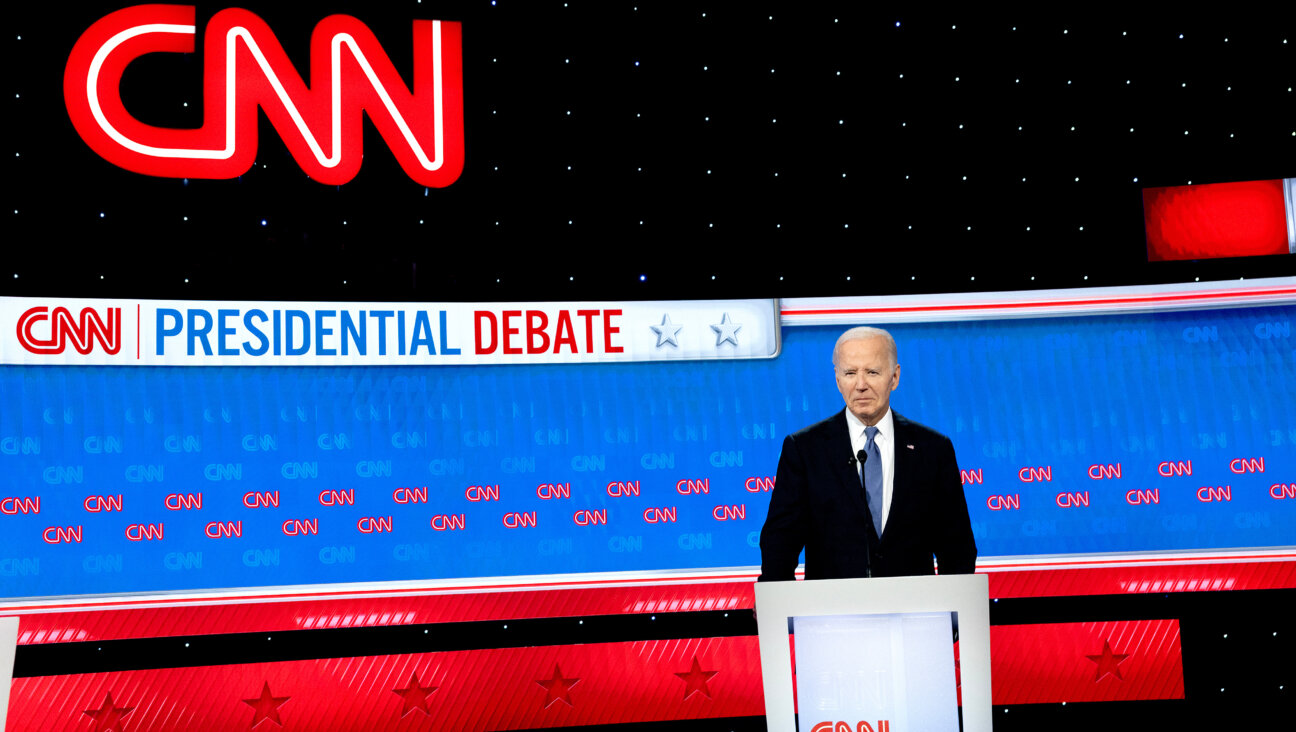Art Is Completely Useless – Here’s Why That’s A Good Thing

Image by Boris Horvat / Getty Images
Look to any conservative site for an article decrying the existence of the National Endowment of the Arts and you will inevitably find a mention of Andre Serrano’s “Piss Christ.” It’s easy outrage fodder for obvious reasons — a photograph of a crucifix submerged in the artist’s urine is intentionally provocative, intentionally difficult, and, here is the crucial thing, incredibly easy to create.
$5,000. That’s how much money Serrano was granted by the NEA for the creation of “Piss Christ.” Leaving aside the offended Christians, or the goosed puritans from every creed that still populate the country, there are those who read that number and think, “$5,000? Artists can do as they please, but any person with a full bladder, a basic camera, and a cheap crucifix could have made this so called art.” Or, how many times have you heard this accusation levied against “modern art” – “my kid could have done that.”
But here’s the thing about the NEA, for every “Piss Christ” or Robert Mapplethorpe – a Kentucky based organization “enacting cultural organizing and place-based media, arts and education to document the life, celebrate the culture, and voice the concerns of people living in Appalachia and rural America” (for the record, the NEA should fund both Mapplethorpes and Appalshops). So while the NEA funds projects that push aesthetic and moral boundaries (an entirely noble pursuit), they also fund projects that work to preserve vestiges of some traditional American cultures. That’s because the NEA funds at least one project in every congressional district, thus prima-facie ensuring at least some modicum of aesthetic and ideological diversity (perusing the funded projects page will corroborate this statement).
Essentially, when some news outlet or some politician tells you that the NEA is just a subsidy for the “wealthy coastal elites,” they are lying. As Alissa Wilkinson of Vox writes at the end of an informative, well-researched, and important article, “The actual NEA granting data shows that its focus isn’t on “rich, liberal elites” — and in fact, if the NEA were to be eliminated, wealthy coastal art lovers would likely be the least affected, partly because programs in their areas can more easily attract private philanthropy and funding. But programs that focus on less elite art, and the audience for it, would be much more likely to suffer.”
That’s all well and good, you might say, but this doesn’t tell me why art is worth funding in the first place. And here is the fundamental problem with all defenses of the NEA – people simply do not agree on the value of art. Because we cannot agree on the value of art, on why we should even create it in the first place, instrumental justifications for the NEA are doomed to fail. Someone who does not understand what makes art an essential part of life will never be convinced that it is deserving of public money, regardless of how many glittering lists or charts are provided as evidence.
This disagreement is pervasive – art itself is an inherently slippery concept, but more than that, people tend to view art like any other commodity. If it can be bought and sold, as plenty of art can, then why should we treat it any differently? In the comments on articles about the NEA, one of the most frequently made arguments is something along the lines of, “if an artist cannot make a living selling his or her art, then the product is not good enough to survive – let the market decide what things are worth, not the government.” The NEA may help artists, they argue, but why should anyone help an artist and not, say, a cobbler? At least we can wear shoes.
In a column last week, conservative thinker George Will articulated a similar point. “We subsidize soybean production,” he writes, “but at least we can say what soybeans are. Are NEA enthusiasts serene about government stipulating, as it must, art’s public purposes that justify public funding? Or do they insist that public funds should be expended for no defined public purpose?”
We can eat soybeans, thus, they serve some public purpose. We cannot eat art, or wear it, or use it as shelter, or use it to shoot things, thus, it does not serve a public purpose. But, and here is where Will lacks imagination, it is precisely art’s uselessness that makes it so important, so necessary – its purpose is that it has no purpose.
By way of explanation, let’s turn to philosopher Theodor Adorno’s “Aesthetic Theory.” In that monster of a book, Adorno writes, “Art becomes social by its opposition to society…rather than complying with existing social norms and qualifying as ‘socially useful,’ it criticized society by merely existing, for which puritans of all stripes condemn it.” Adorno is working against what he considers to be an oppressive “late capitalist” social order, one in which everything is calculated and designed to make people more productive, more involved as a consumer (the truth of Adorno’s diagnosis seems manifestly obvious, even if one may disagree with his politics or his prescription [to the extent that he has one], that is, socialism). In the context of such a society, anything that resists commodification, that resists the market’s pull is, by its mere existence, rebellious.
Now, it must be said that art is increasingly becoming a speculation market – with works purchased and traded by art dealers as one would purchase stocks – and in this regard some of its radical potential is diminished. It must also be noted that capitalism is a totalizing system — if one lives in a capitalist society, one will, inevitably, come under its heading in some regard (except, I suppose, for the rare cases of those living in complete isolation, or on entirely isolated self-sustaining communes) – artists, like all people, must eat, and therefore must work non-art jobs or must sell their art to make a living and thus participate in the capitalist system.
The totalizing effect of capitalism has two important features in regards to art. First, market demand is a form of vampirism – finding a successful idea, it will suck all the blood (capital) from an idea before moving on to the next. Take for example the Raf Simmons Calvin Klein ad campaign. Due to the proliferation of images of art on the internet, companies are increasingly realizing that the mere presence of art in an ad campaign can elevate their brand and resonate with an ever more image-centric society. Having found a nice source of blood (“modern art”) the market will drain it (or in marketing terms, saturate it) before moving on to the next blood source – the Calvin Klein campaign is just the latest manifestation of this trend. Tied up with this process of duplication, we also have the process of incorporation. Things that once existed outside the system, will, after some time become commodified, become absorbed – in the Calvin Klein campaign, Sterling Ruby’s art is now being used to sell underwear; Karl Marx wrote the “Communist Manifesto,” and now we buy coffee mugs with his face on them.
But, not all cultural production is for sale. Many artists create their work not out of monetary concerns, but simply because they are compelled by something illimitable and internal to themselves. Art will be made even if there is no one willing to buy it. Indeed, many of the greatest works are those that resist, or take no heed, of market trends – we tend to forget that artists now canonized by posterity often struggled at the time of their work’s creation (a couple famous examples – both Edgar Allen Poe and Vincent van Gogh were obscure and indigent artists in their lifetimes). As we know, the NEA almost exclusively helps institutions (with the only exception being the Literature Fellowships) which can in turn help individual artists as well as communities. – cultural work like that done by the aforementioned Appalshop is done simply to preserve a culture, to give people a sense of their history, to provide occasion for the useless and joyful production of dance or music or visual arts, it is a work that you cannot buy.
(Digressing for a moment – writer Mark Fisher, in his book “Capitalist Realism” makes the case, that things are much worse than they appear. He writes, “What we are dealing with now is not the incorporation of materials that previously seemed to possess subversive potentials, but instead, their precorporation: the pre-emptive formatting and shaping of desires, aspirations and hopes by capitalist culture” – that is, even things that ostensibly operate outside the system are constituted in such a way that, not only will they one day be absorbed into the system [as Adorno also theorized], but they are already a part of it – capitalist domination is such that they cannot possibly be outside the system, because there no longer is an outside. This warrants an article of its own, but it is worth bearing in mind that despite all the rosy idealism of art for art’s sake, we might have lost even that prospect.)
To be sure, the criticism of the NEA on the grounds that its existence represents the possibility for a state propaganda ministry is a compelling one, but to object to the NEA on the grounds that art is purposeless is not. For people like George Will or the myriad commenters and commentators on Breitbart and the like, things exist to be bought and sold. One must wonder, reading their takedowns of the NEA, if there is any purposeful activity in life other than working and eating (“more soybeans!” Will might say). Where all things exist to be bought and sold, people are commodities as well — their worth depends merely upon their use-value, upon their capacity to work and consume. It is a profoundly degrading, dismal way of viewing the world.
What they do not grasp is that art, in its purposelessness, in its uselessness, represents an alternative mode of thinking, an alternative way of living. It shows us that there are some experiences, some things that cannot be debased by commodification. That there is some dignity to life beyond labor and its product. To the “coastal elite” and the impoverished communities of the rust belt and everybody in between (once the need for food, shelter, and safety is satisfied, an increasingly dubious assurance), uselessness is absolutely necessary because everyone everywhere must at all times be reminded of the dignity and value of human existence, of the justification for human existence, which surely must extend beyond the factory floor or office cubicle if it exists at all.
Yes, as Will states in his article, “The idea that the arts will wither away if the NEA goes away is risible.” There will be art with or without government assistance, but a government that so consciously and conspicuously spurns art and cultural production is one that does not understand that the greatness of a country is determined by more than its GDP. On the other hand, a government that reaffirms the value of the arts, even with an institution as diminutively funded as the NEA, is one that might just yet believe in the dignity of the governed.
Jake Romm is a Contributing Editor for The Forward. Contact him at [email protected]
















